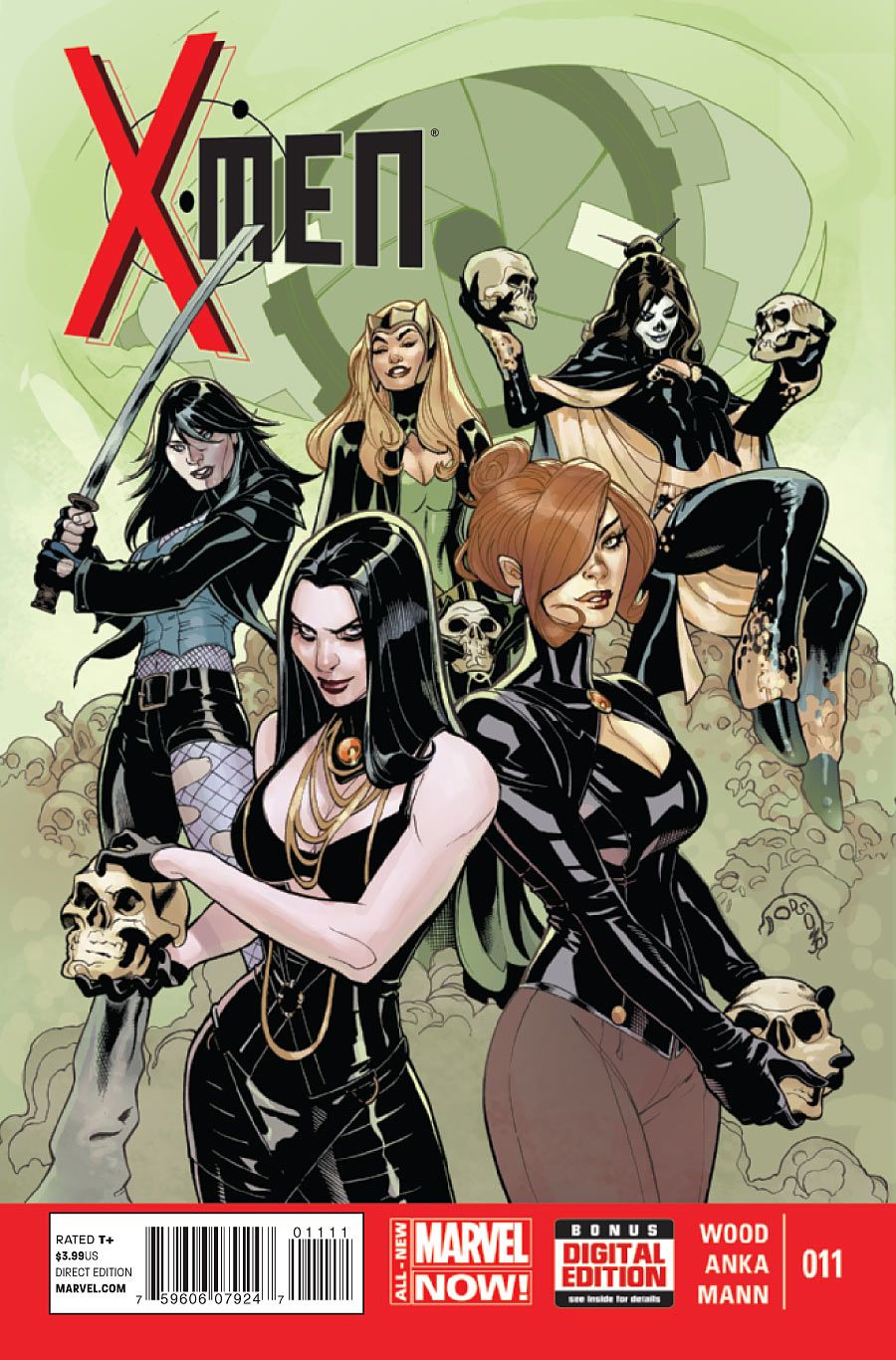With some obligatory in-fighting, the X-Men are hard-pressed to find a solution to their Arkea problem as the Sisterhood races to resurrect their most dangerous foes. With Kris Anka's lovely but lacking artwork, Brian Wood's "X-Men" #11 takes an unfortunate turn for the worse with confusing timelines, uneven pacing, and a fallback into cliche.
This issue, like the last, is split -- decisively -- into two parts: the main story that follows Storm, Rachel, Psylocke, Karima and Monet which ends of the note of "To be concluded!" and the smaller afterword that follows, detailing the confrontation between Jubilee, a few of the younger mutants, and Arkea-infested Sentinels. While this device normally wouldn't be a problem, the split serves up a whole host of complications, beginning with an abrupt and easy-to-miss transition into an entirely new scene and ending with plot inconsistences, the most glaring of which being that Quentin Quire seems to be in two places at once: this battle and the School. Although the scene is fun and packed with action, it feels out-of-place and serves no given purpose (that we've seen, at least). What's more, it trips up the arc's continuity in a way that's more irritating than suspenseful; if you opened the issue looking for a quick resolution to last month's cliffhanger, be prepared to hold off until the very end.
With his post-"Battle of the Atom" arc, Wood introduced a new character in the form of Ana Cortes, who quickly became enmeshed with Yuriko Oyama of Lady Deathstrike fame. This new symbiotic Lady Deathstrike has been a fascinating addition to X-Men lore, but her character takes a sharp and unexpected turn in this issue. (Here there be spoilers; those of you who haven't read it yet, consider yourself warned!) Where the previous issue opened with a narration that reinforced Deathstrike's absolute resolve, this one finds her Ana consciousness frightened, plaintive, and suicidal. Previously, Wood laid the seeds of her dissent through her complaints and an episode of fright, but in no such way did he build towards such a dramatic turn of events. There simply was not enough set up; her suicide attempt comes out of nowhere, not out of an established plot, especially where she seemed so determined just one issue prior. Additionally, Wood falls back Ana's age, using a want of popularity and male attention as the source of her motivation, which ultimately comes off as trite and cliche.
While the story leaves the reader wanting, newcomer Kris Anka provides some solid artwork. Figure work is where he excels; his characters have fantastic expressions, especially through their eyes, and their posturing has an easy, natural feel. A few moments stand out in particular, like the horror he infuses info Selena's resurrection scene (not to mention Enchantress's banging green power suit) and his brief stint with Quentin Quire. Although his character work absolutely carries the book, the panel scenery can be lacking; that is, he abandons detail in favor of solid-color backgrounds. While this further emphasizes his excellent character design, it does draw away from the book, leaving the audience little to dwell on with subsequent readings. Jason Keith adds some gorgeous color to the book, making scenes like Selena's restoration pop with vibrant tones.
"X-Men" #11 is a disappointment in what has otherwise been a strong run. With a few too many careless mistakes and some poor set up, Brian Wood's writing falters and ultimately suffers for it. However, Kris Anka does a wonderful job with the issue as a whole; if there's any reason to pick up this book, it's the artwork.

